Day 7: Over breakfast the next morning, we planned our next move. I figured we should spend at least one, possibly two full days in Merida, and I wanted to hold the driving to a minimum. Traffic in the city was terrible, one confusing roundabout after another, and the streets were filled with idiots who apparently considered driving a blood sport.
Our reservation at the Dolores Alba was all set and paid for, but the room wasn’t supposed to be available until 3:00. We drove over there anyway, and presented ourselves at the desk, to see if we could finagle an earlier check in. That wasn’t possible, unfortunately, but they did agree to let us leave the Jeep in their parking lot, and that was almost as good. The Dolores had a much better location than our first hotel. It was just three blocks from the main plaza, so we’d be able to do practically all our exploring on foot.
The Dolores was actually nicer than we expected, with a double courtyard, a pool on one side, and a dining area on the other. Prints of Frida Kahlo’s surrealistic paintings hung on the walls, setting the tone for the place.
Prints of paintings by famed Mexican artist Frida Kahlo hang on corridor walls throughout the hotel
$35 per night for a double room seemed like an unusual bargain. I asked about their prices, and was quite surprised to learn that our rate was a special discount that was only available through Expedia, a big savings that more than offset the booking fee. If we had walked in off the street, they would have charged us $50 for the same room, which was the opposite of what I would have expected.
Merida is a Colonial City with a long history, dating all the way back to the 16th century. There is no “modern” downtown with steel and glass skyscrapers of the sort we saw in Monterrey and Queretaro. Instead, Merida, known as the “White City,” has a core of historic buildings, fine examples of the Spanish Colonial Architecture that once dominated this part of the world, featuring arches, colonnades, wrought iron, and elaborate cornices decorating old buildings plastered with white stucco. The cathedral on the main plaza dates back to 1562, and was built, at least in part, using stone recycled from ruined Mayan temples.
Scenes in and around the main plaza in Merida
We spent the day wandering the area near the Plaza. The sky was cloudy, threatening rain, on and off, so it was a bit humid, yet not overly hot. The climate in Merida is a lot like South Florida, with balmy winters and steaming hot summers. This was October, so it was pleasantly in between.
Merida was a walled city at one time in its history, fortified against the occasional native uprising, and some of the old city gates are still standing, as monuments to a very different era. Touring the downtown in a horse drawn carriage is a popular activity for tourists, as well as for locals.
There was quite a bustle of activity around the square, preparations for the big Festival of the Maya that would be taking place over the next 10 days. That first night, the big event was going to be a recreation of the ceremonial ball game that was played in the ancient Mayan cities, and the following night, a huge celebration with costumed dancers. We met several local people that day, and they all made a point of inviting us to the festivities. We knew nothing about any of that in advance, so our excellent timing was purely a stroke of good luck!
One gentleman in particular, on the pretext of practicing his English, gave us a lengthy spiel about Panama Hats.
The real ones come from Ecuador, and I knew a bit about them, because I used to live there, and I’ve traveled in the Province where they’re traditionally made. Our would-be friend informed us that they made them in the Yucatan as well, just as good and much cheaper! I expressed some skepticism about all that, and the next thing I knew, he’d steered us into a dingy, cluttered shop on the next block. This was his uncle’s store, he explained, and he’d get us the best deal in town.
The “uncle” came out of the back and started in on the hard sell. A real Panama hat costs $200 or more, and these were just 1500 Pesos, a bit more than $80. I examined the weave, pointed out that it wasn’t all that tight, and offered him half that amount, $40. He threw up his hands, claimed we were trying to rob him, and countered with $60. After some back and forth, Mike and I each bought a hat, and paid just $50 apiece. The price seemed fair, and we felt pretty smug about our bargaining skills, until later that day, when we discovered that everywhere else in town, the same hats were selling for $30!
Merida was a friendly town, and we didn’t feel unsafe in any part of it, not even when wandering in the public market, or down by the bus terminals, traditionally the sketchiest neighborhoods in any city. There were numerous displays of public art on and around the Grand Plaza, but my favorite had to be the Staircase Murals, painted by Mexican artist Fernando Castro Pacheco in the early 1970’s. They can be seen above a staircase in the courtyard of Merida’s Palace of Government:
The Staircase Murals, by Fernando Castro Pacheco
By the end of that day we were pretty well beat from all the walking, so after an early dinner, we headed back to our room, and skipped the Mayan Ball Game. (One of many lazy decisions I later regretted!)
Next up: Festival of the Maya (a very colorful affair!)



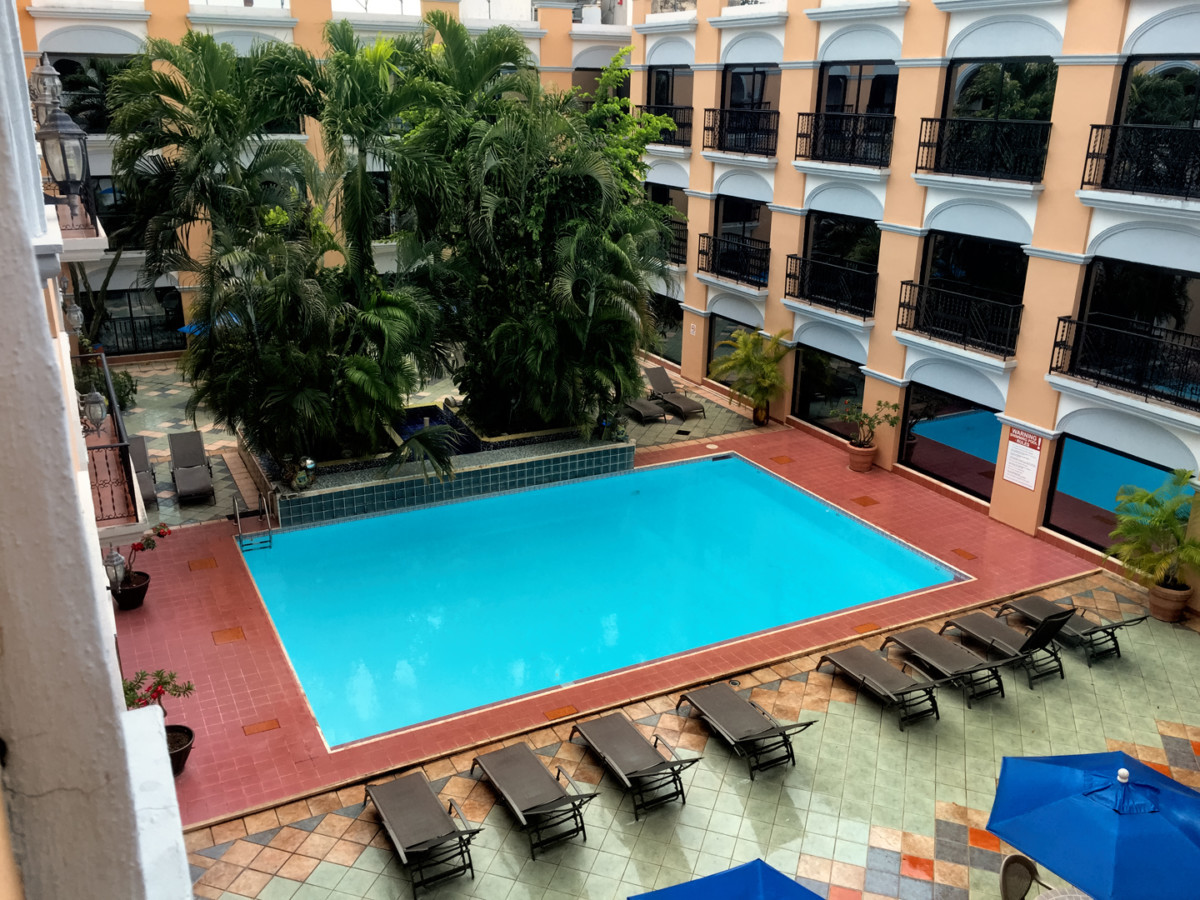
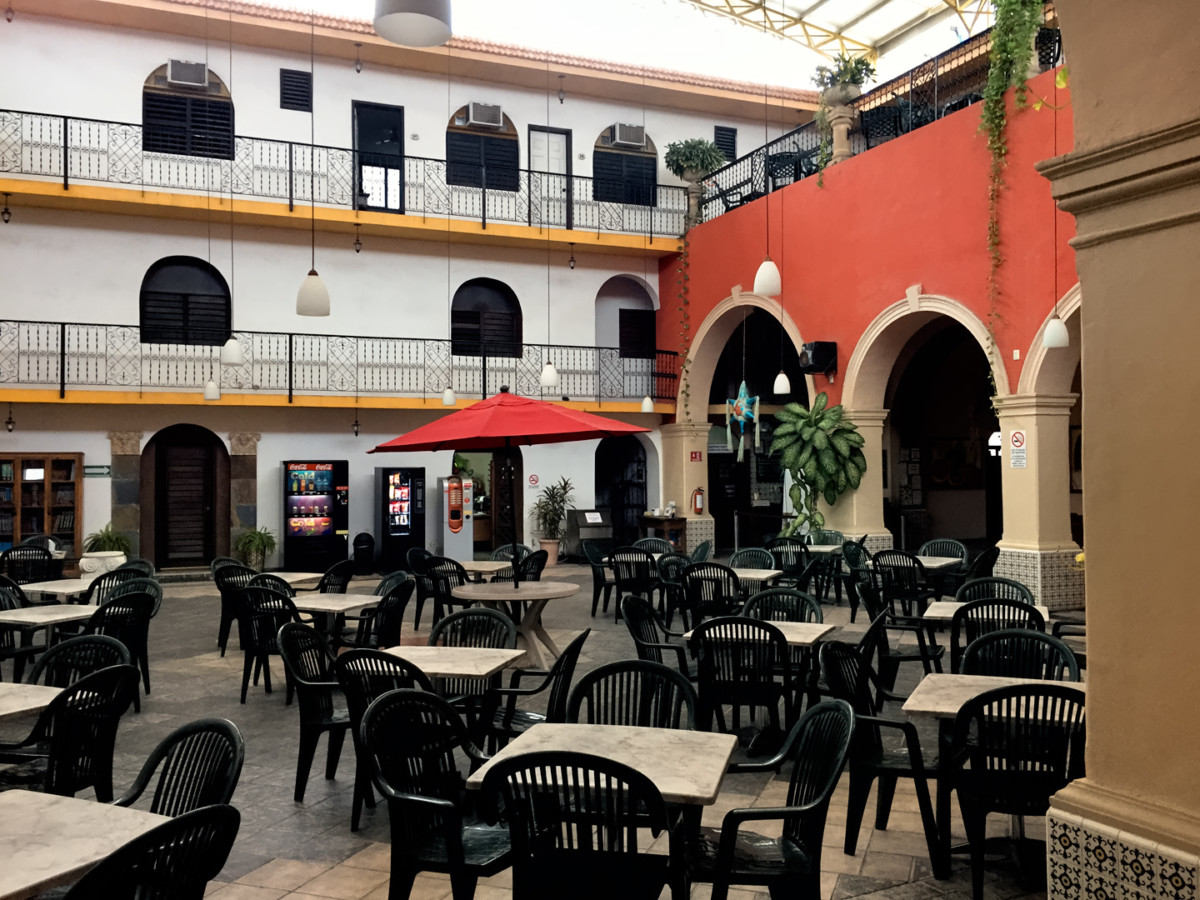
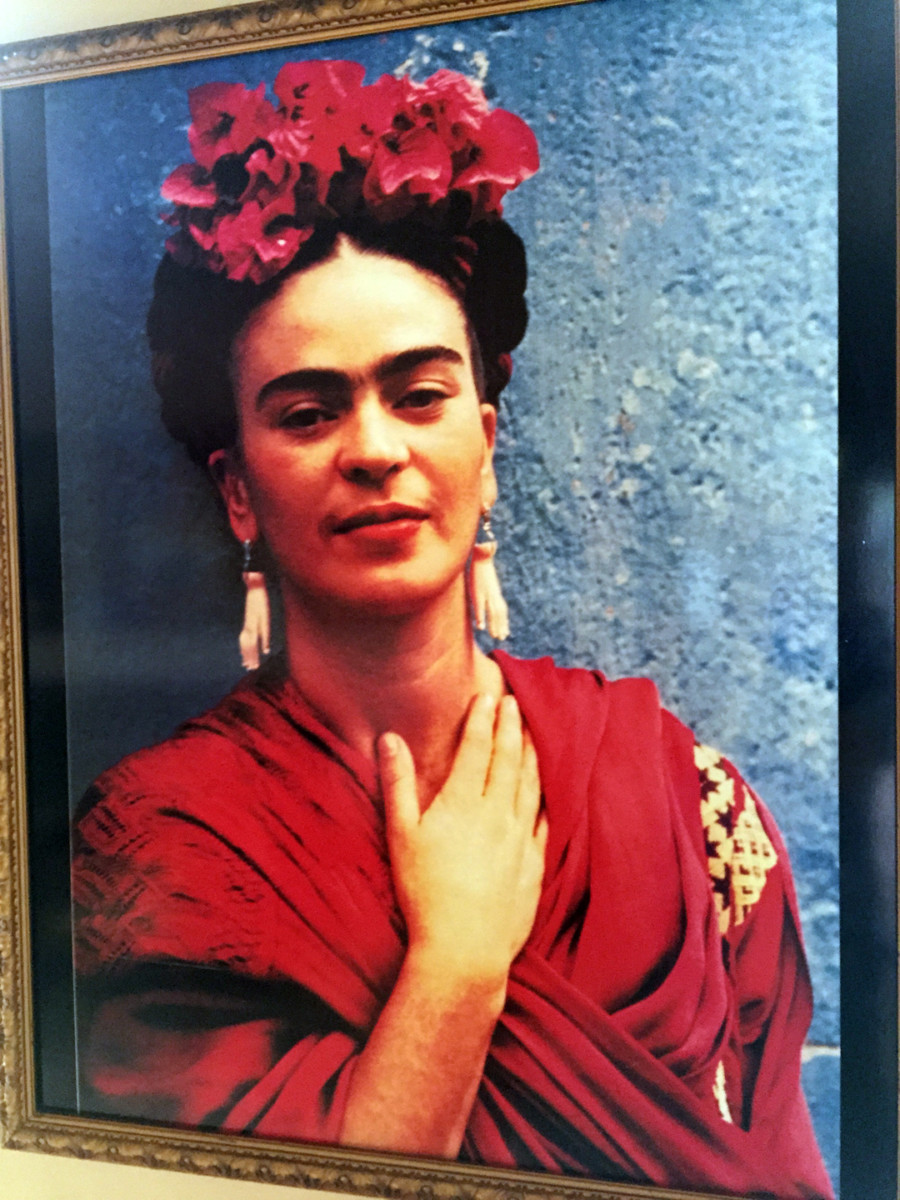
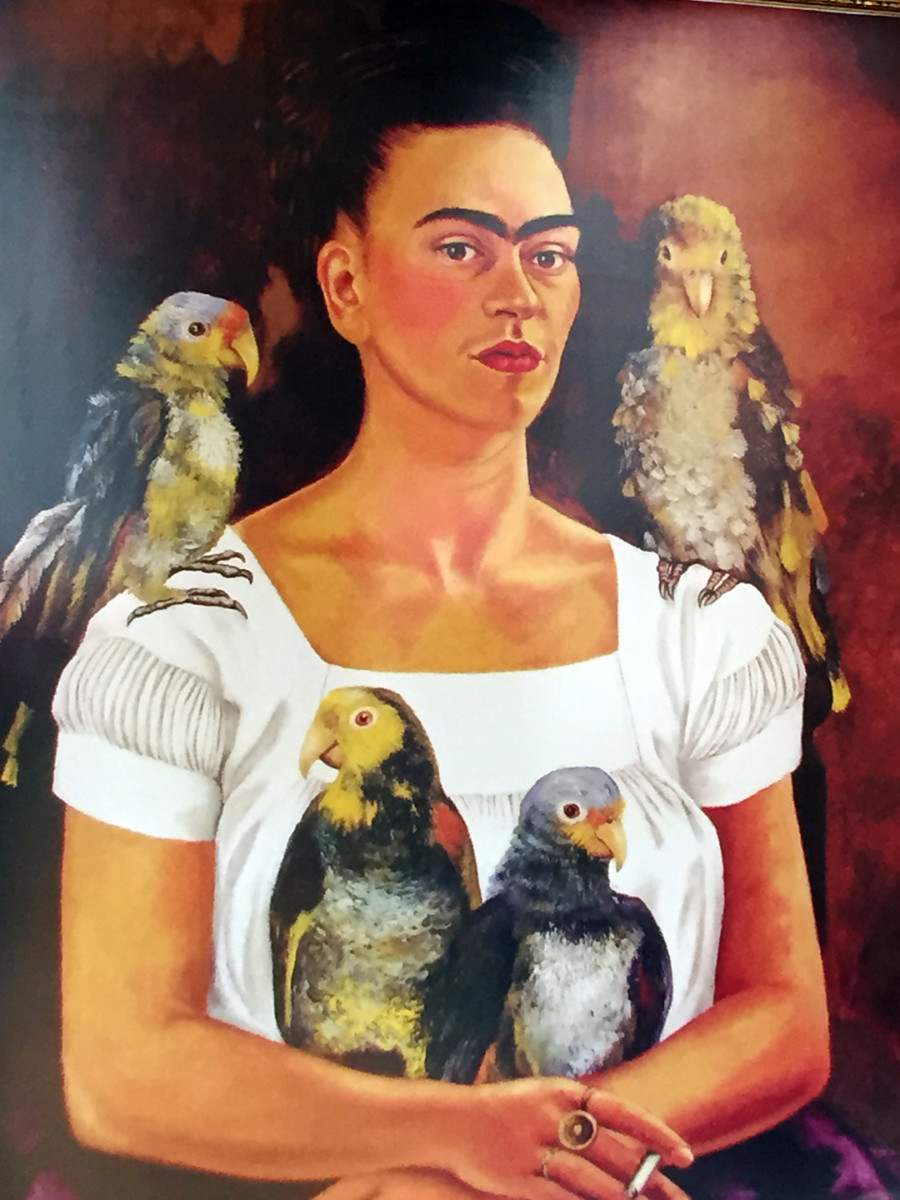
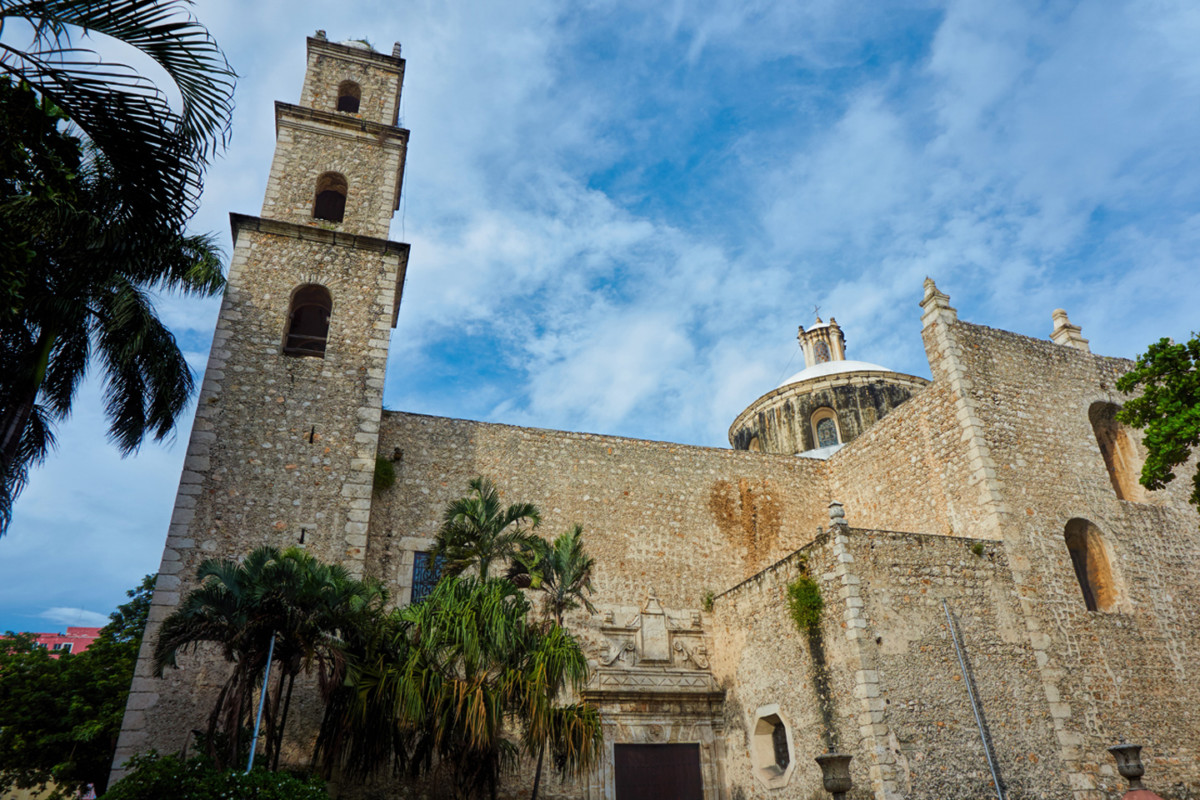
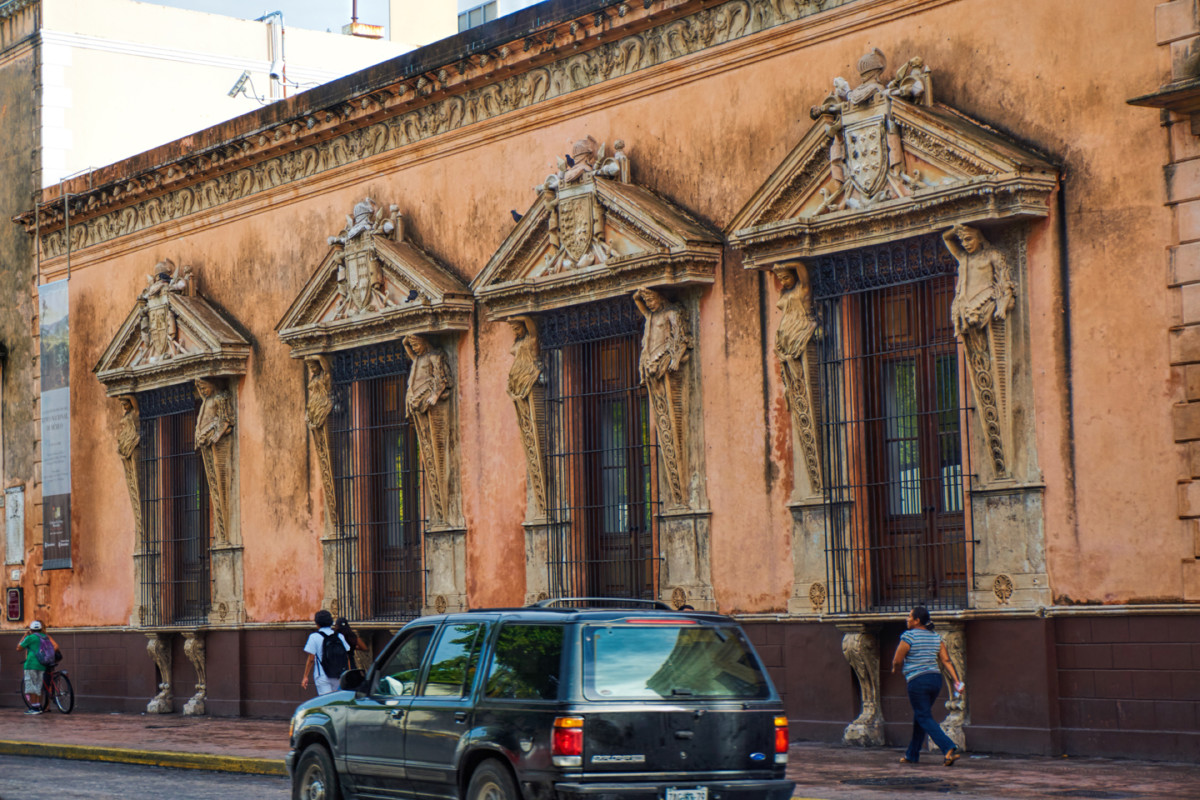
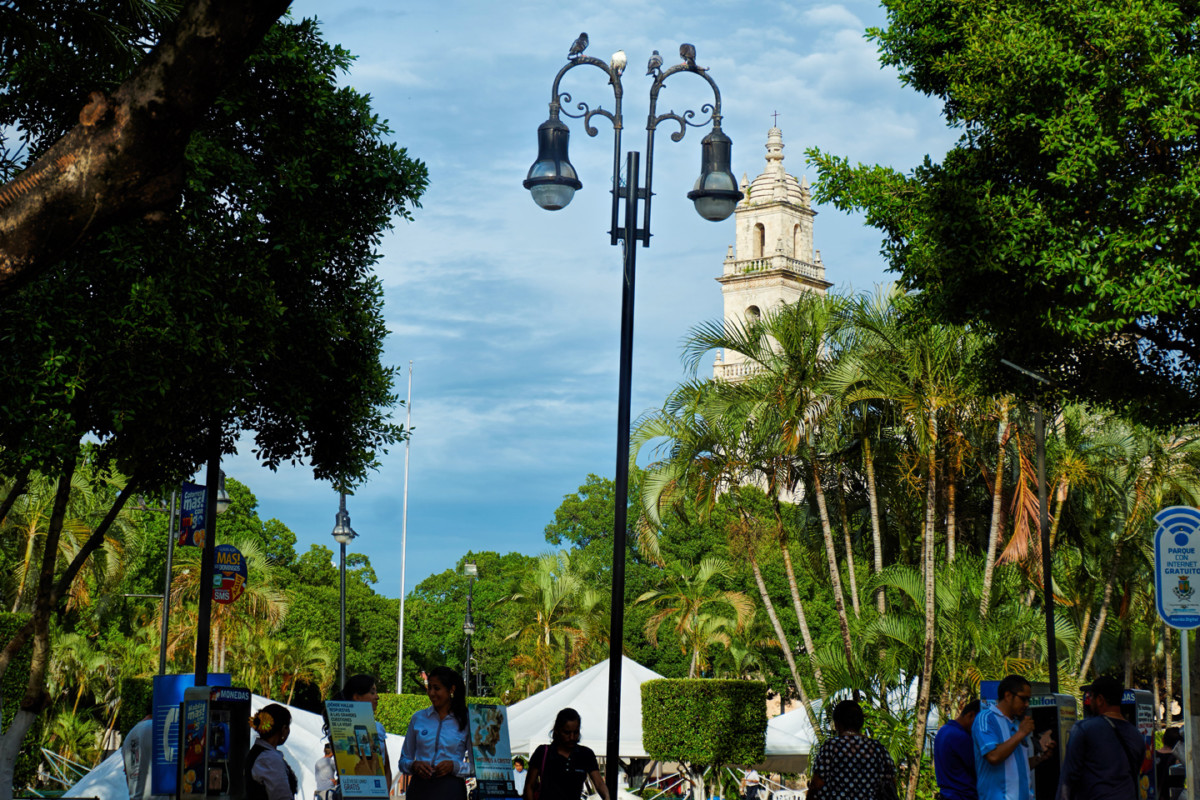
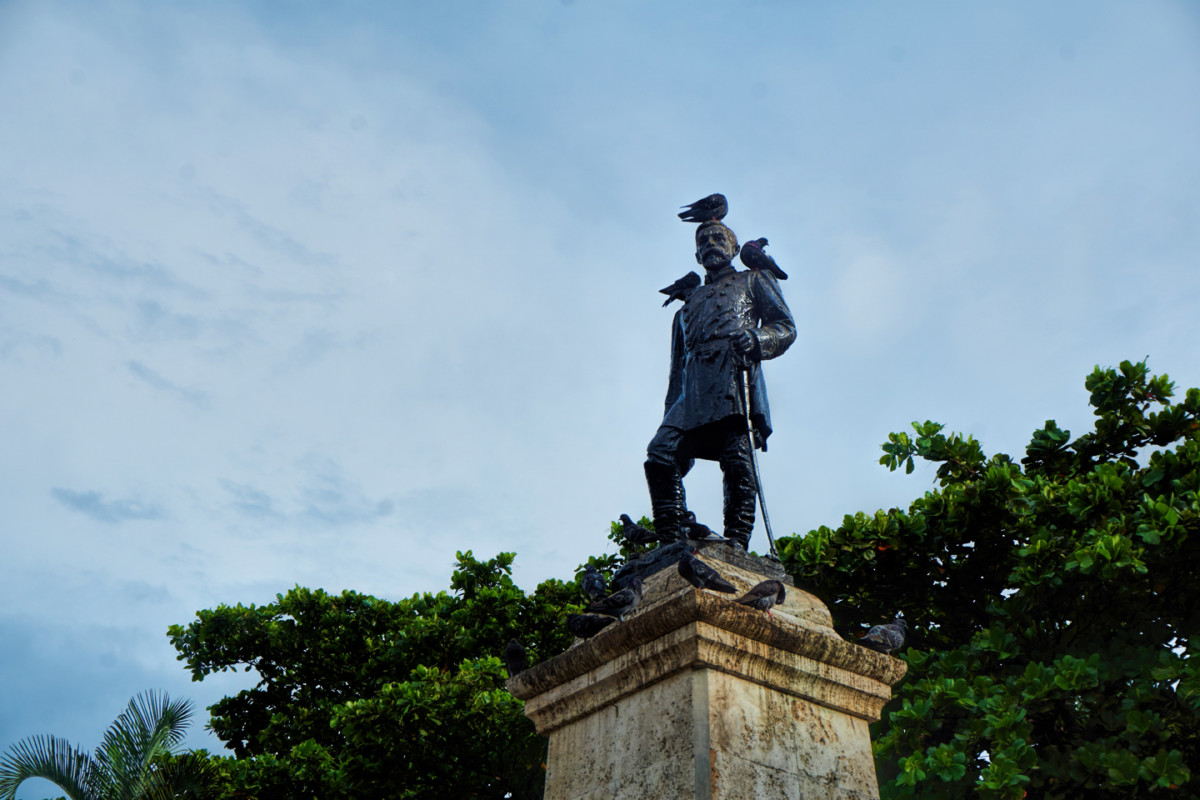
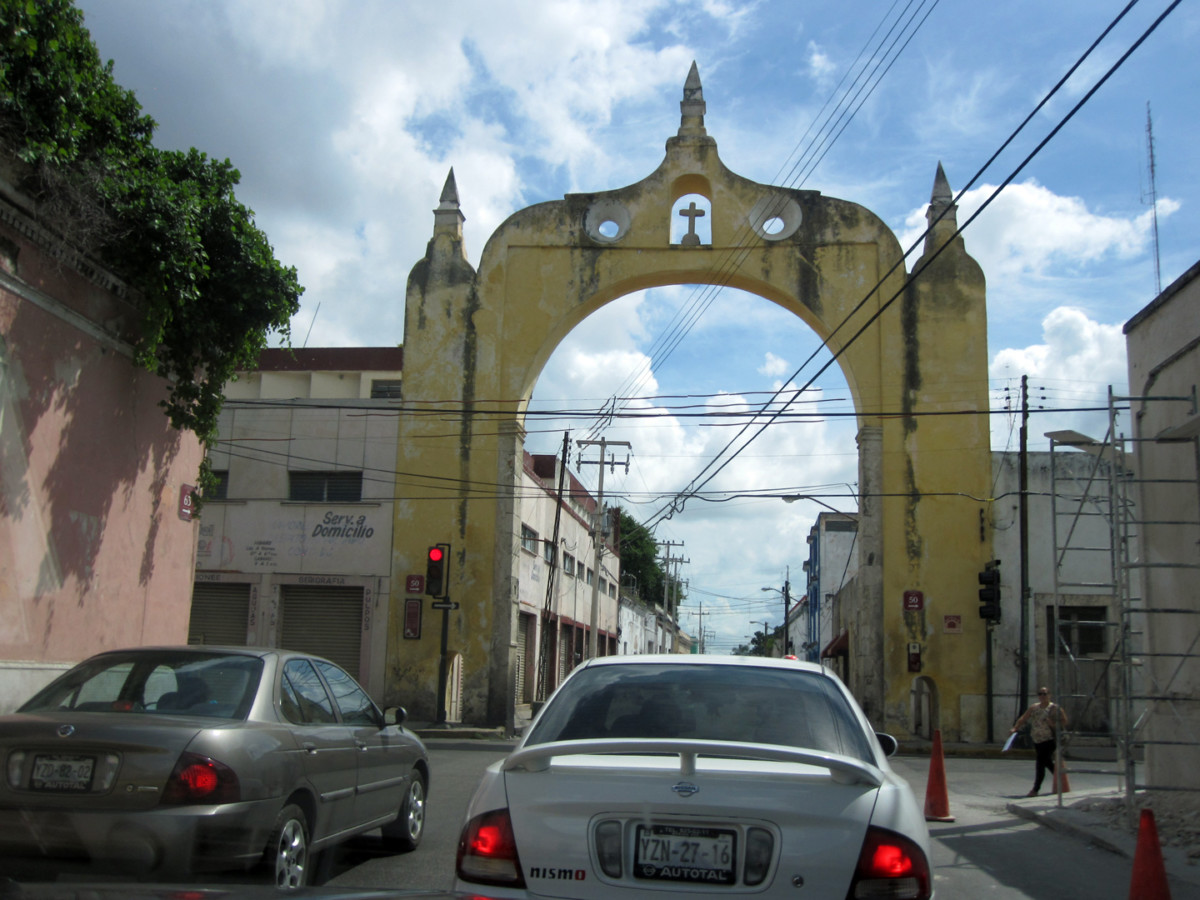
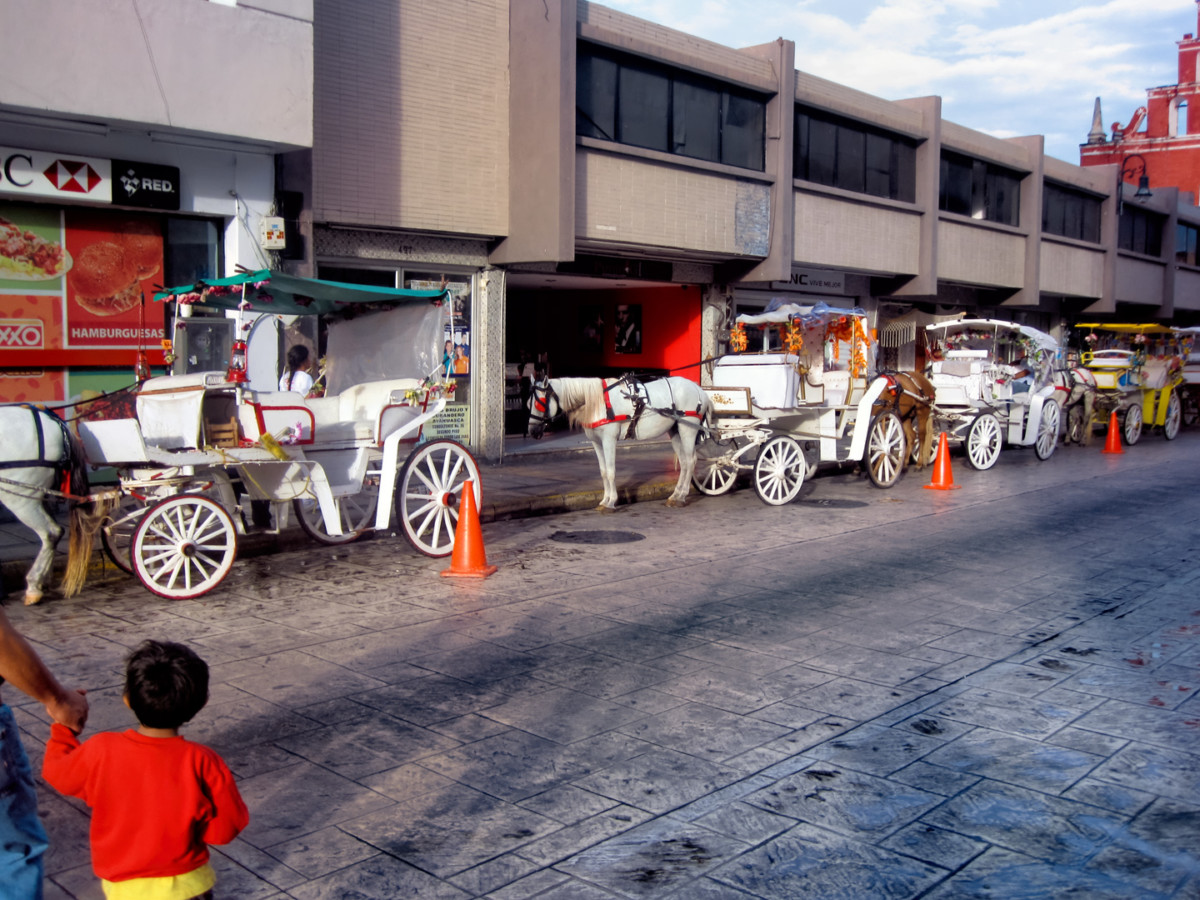
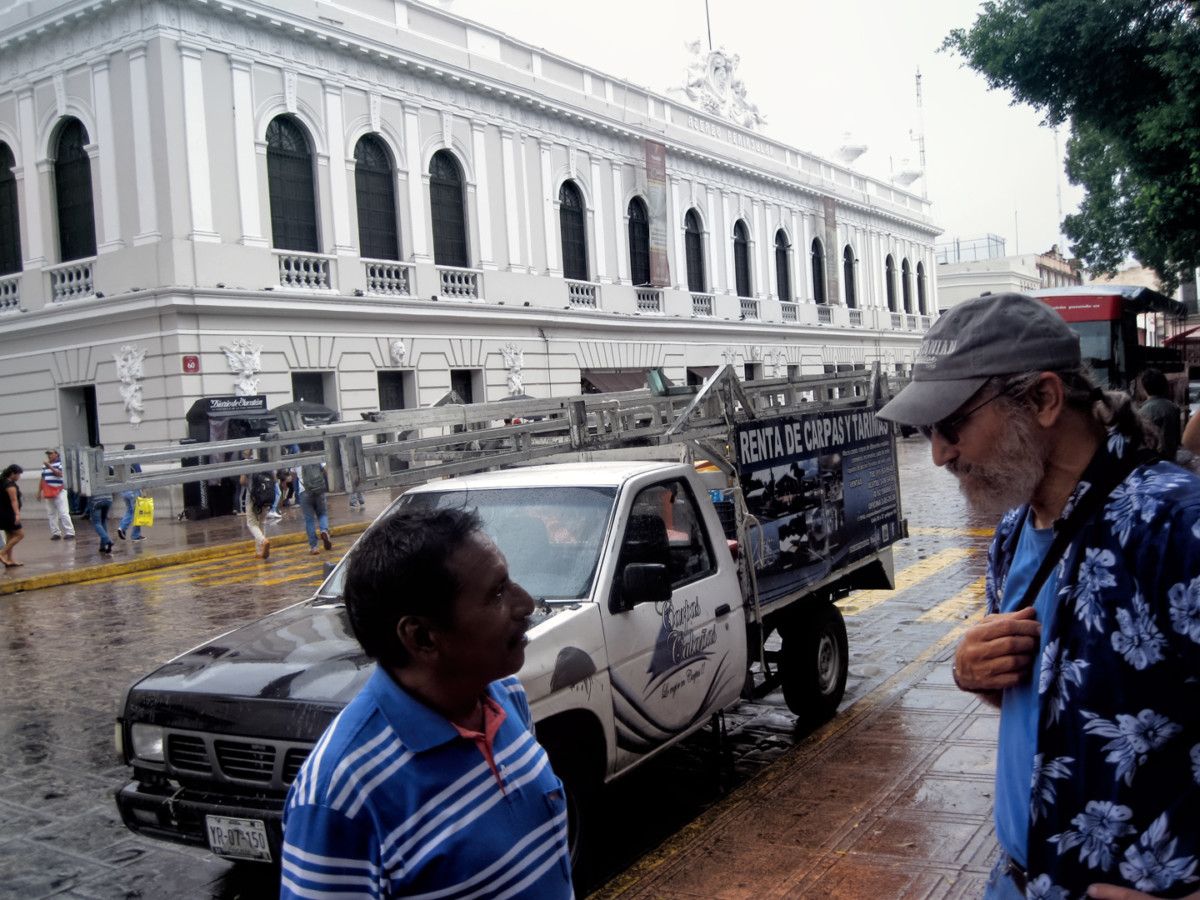
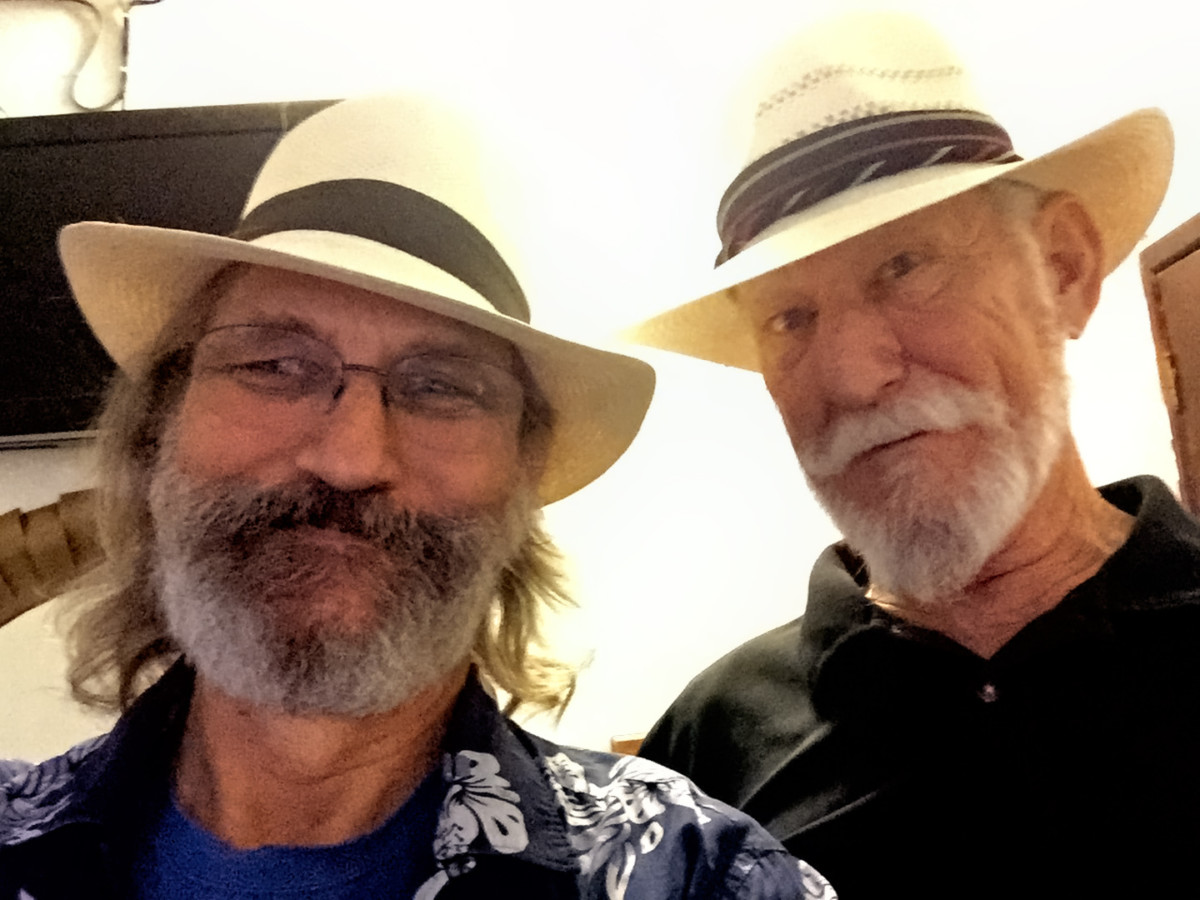
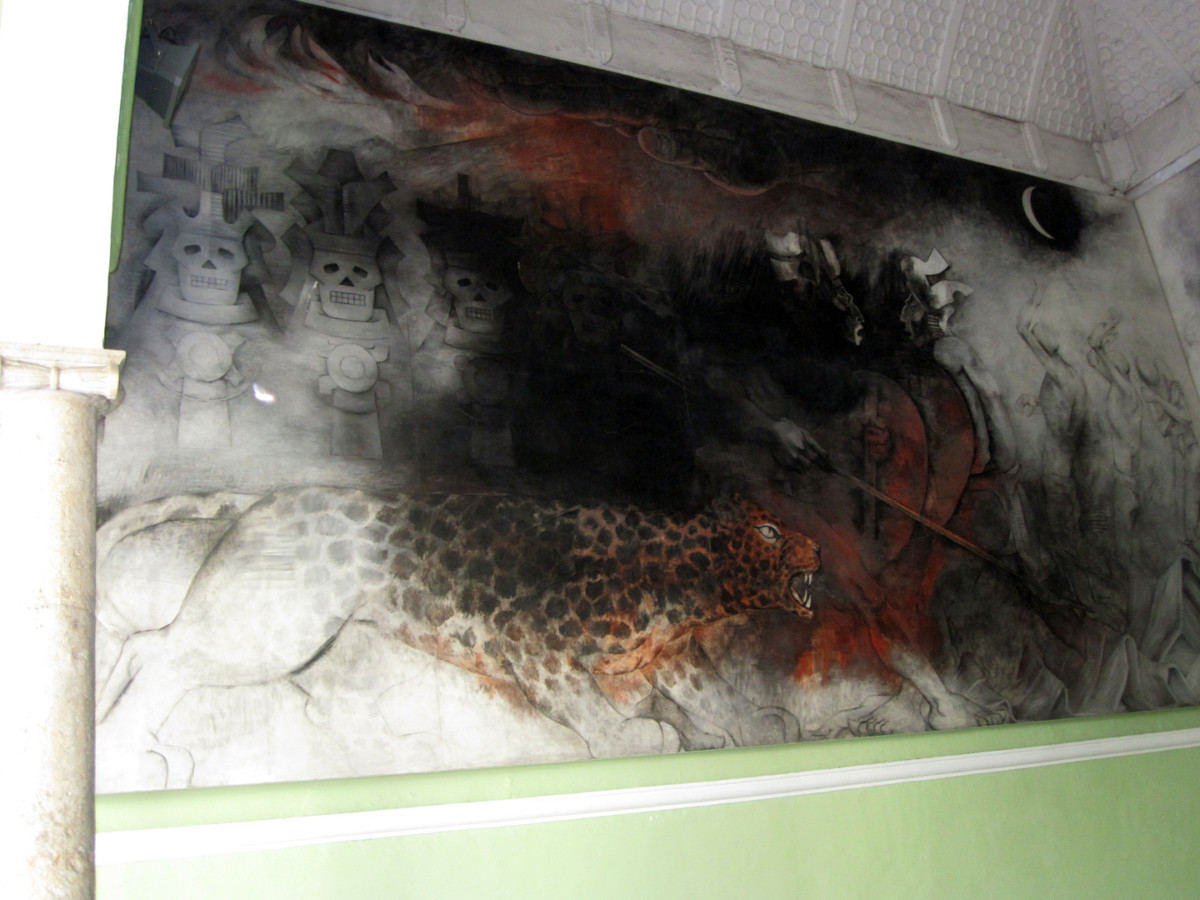
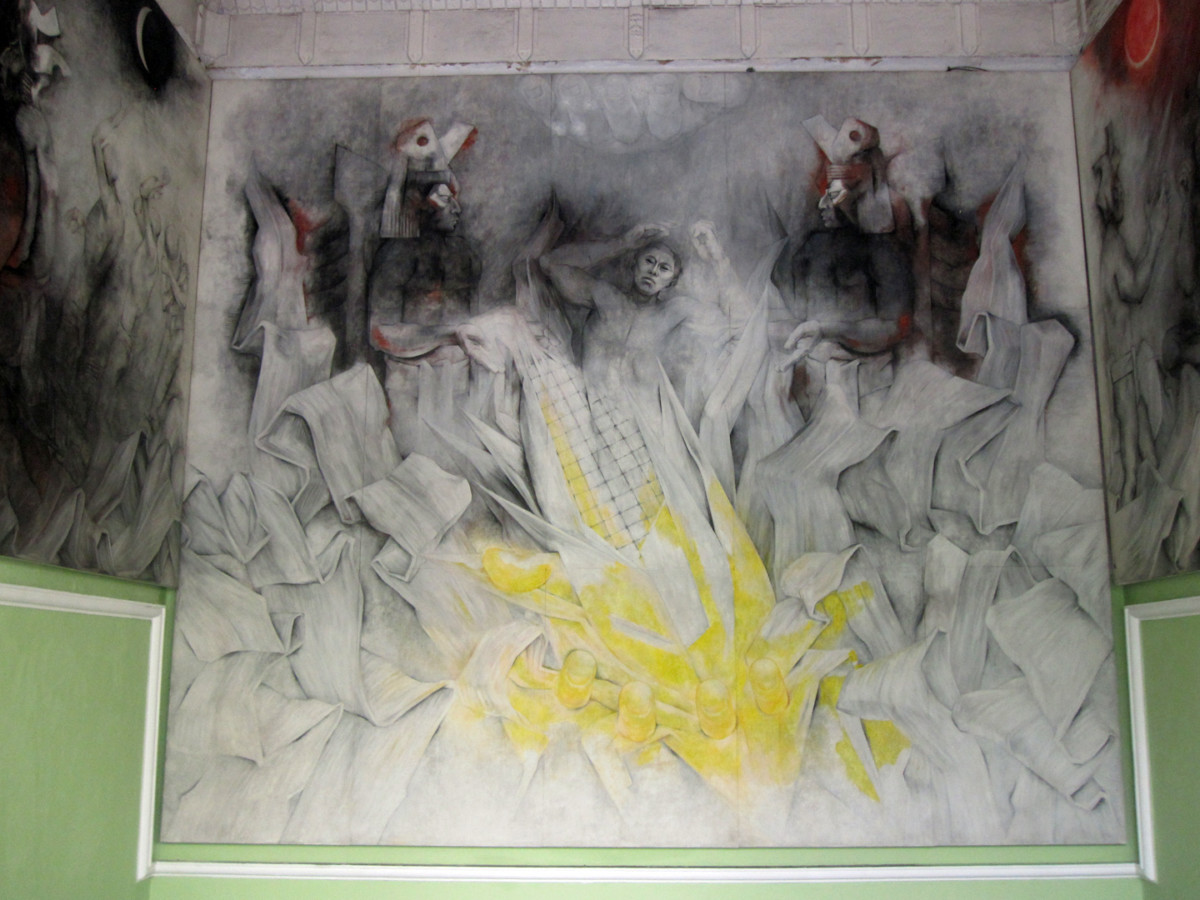
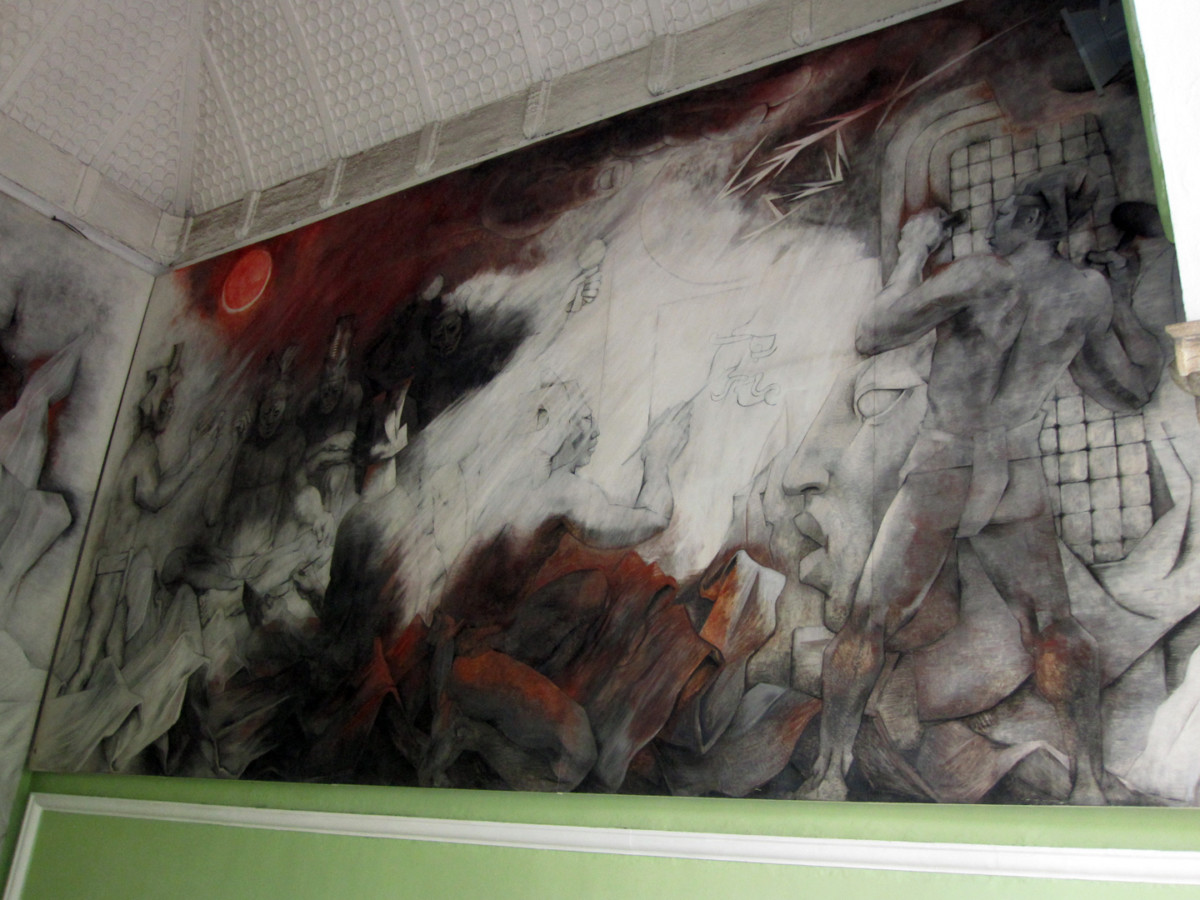

 Reply With Quote
Reply With Quote

